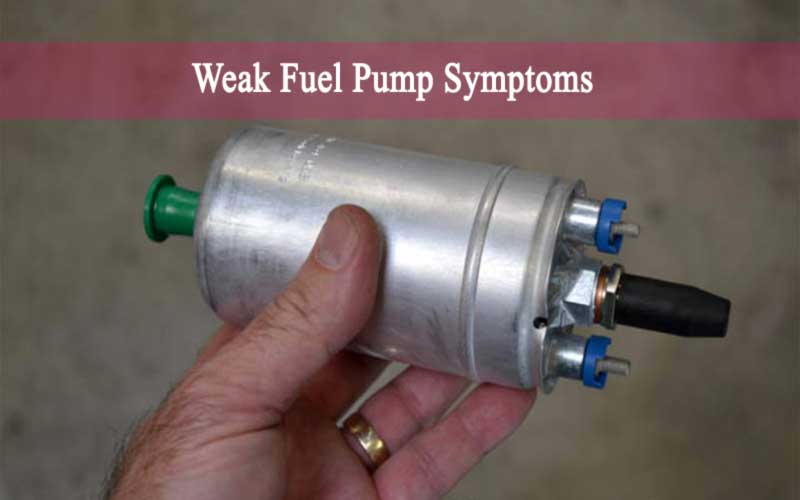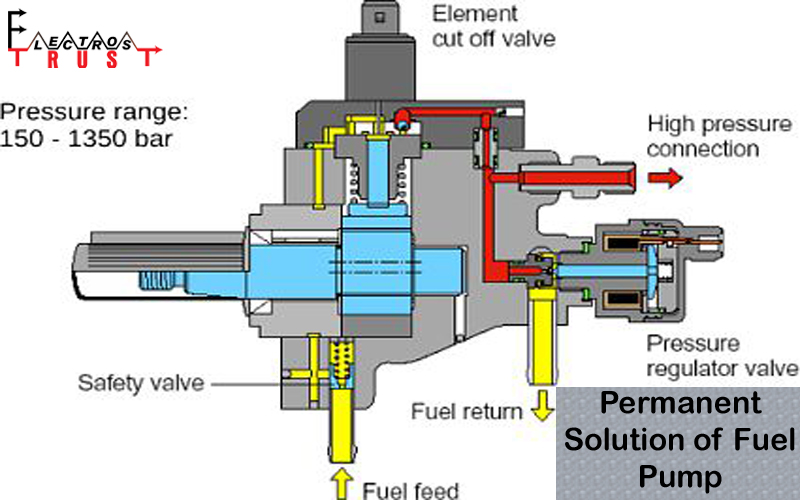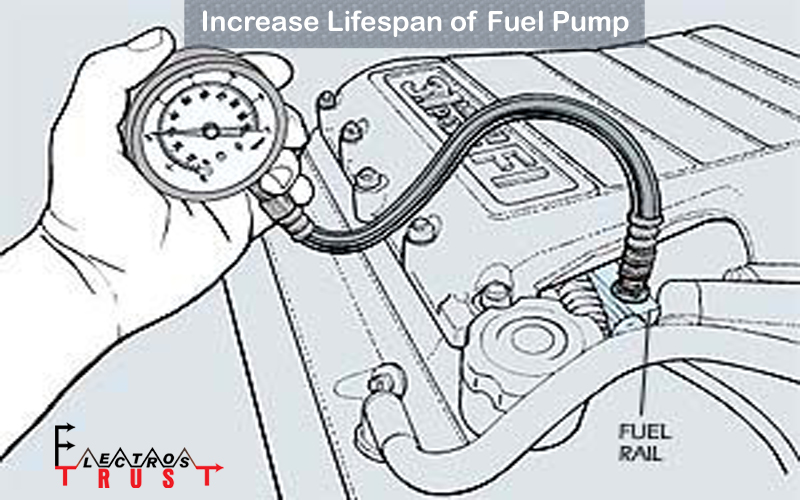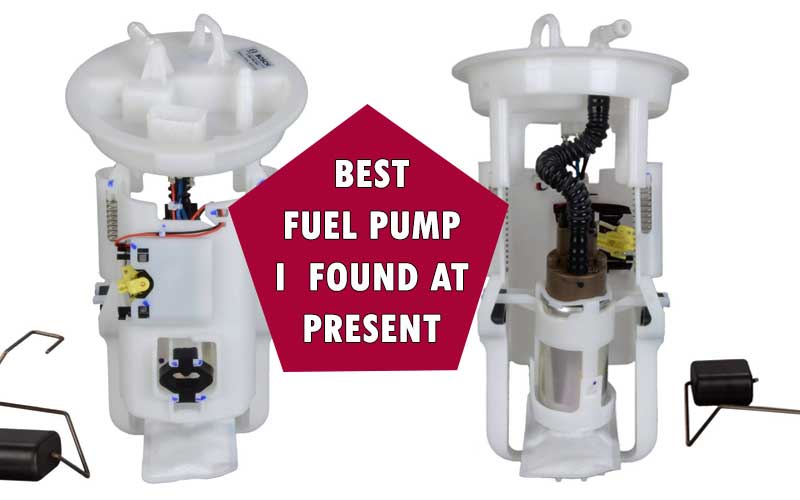How to Start a Car with a Bad Fuel Pump – Step by Step Guide
When you are driving on the highway or any residential road, and suddenly you notice that the car isn’t accelerating properly despite making efforts; this is a red-flag which you shouldn’t overlook.
Furthermore, the issue causes sudden jerkiness of the wheel and makes it difficult to start the engine. These are the most common signs of having a bad fuel pump.
Let me guess, you probably wondering how to start a car with a bad fuel pump. Right?
As a temporary solution, there are ways to start the engine with a faulty fuel pump. And in this article, I will talk about the signs of a bad fuel pump and how you can fix it.
Where Is the Fuel Pump Located?
Becoming an essential component of a vehicle’s fuel system, a fuel pump can be found both outside and inside the fuel tank. Low-pressure pumps likes the ones used by carburetor engines sit outside the tank, but electrical pumps that distribute at high pressure settings are mounted inside the tank.

Where Is the Fuel Pump Located
Your car might have a fuel injected engine that includes two different fuel pump variants. One of the pumps supplies a high volume at a low pressure and is located in the fuel tank. The other supplies a low volume at a high pressure.
The most common position of fuel pumps these days is their being bolted onto the block or head of the engine. These pumps use the engine’s motion to do its job – pumping the fuel. It’s either a camshaft or a crankshaft that drives them. Pumps that sit on the car’s frame rail or in the tank are powered by the battery of the car.
Start a Car with a Bad Fuel Pump – Guide Line
Pumping fuel like gasoline or diesel from the fuel tank of a vehicle to its engine is what a fuel pump does. The pump also distributes the fuel under high or low pressure depending on the type of engine. The distribution occurs to a carburetor engine under low pressure and a fuel-injected engine under high pressure.
Speaking of the capacity of the fuel pump, the rate at which it flows determines how powerful an engine it’s going to support. Ideally, you can multiply the flow rate by 10 to calculate the horsepower of an engine that can be supported. For example, a pump that flows at 50 gallons per hour (GPH) should be good for a 500 HP engine.

start a car with a bad fuel pump
A fuel pump’s flow rate is associated with the fuel pressure it receives. With nearly zero pressure, the pump flows at its peak. With the pressure increasing, the flow keeps decreasing. The flow rates of a fuel pump vary in accordance with different voltages. Increased voltage leads to a speedy fuel pump or an increased flow of it.
So far, three types of fuel pumps have been in use by vehicles, such as mechanical, electric, and turbo. Mechanical pumps go well with carburetor engines, and the electric ones are for vehicles with fuel-injection systems.
A small motor powers up electric models that use a line to draw fuel. With the crankshaft spinning, a mechanical pump starts moving and drawing fuel through a fuel line using a suction.
There’s one distinguishable type named turbo pumps which are way more capable of doing what a fuel pump does than both the mechanical and electric fuel pumps.
Due to the growing popularity of automobiles with a fuel-injection system, electric pumps are taking the place of the mechanical pumps quickly. Turbo models are usually restricted to high-capacity engines.
Let’s demonstrate the role of a fuel pump to run a vehicle.
Cars are equipped with an internal combustion engine along with a fuel pump. Electric pumps are mounted within the fuel tank in some cars. On the other hand, some cars have inline pumps closed toward the engine.
How Is Fuel Drawn Up from the Tank?
Electric fuel pumps run through a small motor by drawing fuel from the gas tank using a line. While on the flip side, mechanical fuel pumps move when the crankshaft spins and draws fuel through a line with a suction.
How Fuel Travels Through the Fuel Line?
How the fuel will make its way to the cylinder, largely depends on the engine makeup.
Fuel mixes with the air and creates a mixture in carbureted engines. This mixture, later on, travels toward the cylinder. In fuel-injected engines, fuel and air mix up in the cylinder. When the mixture is in the cylinder, the car engages some other parts to run the engine. A spark is added to the fuel as well.
The Mixture Creates Spark
Fuel and air mixture is compressed by the piston for making it even flammable. When the piston moves and creates fires, the mixture becomes more compressed.
Powers the Crankshaft
In this stage, the fuel powers the crankshaft to keep your car moving. Later, it travels further down and is expelled as exhaust.
What Happens Behind the Scene if a Fuel Pump Goes Out?
A defective fuel pump causes significant drops in car performance along with major driveability issues in vehicles.
When the fuel to air ratio is problematic, and cylinders don’t get the fuel, then there will be no firing from pistons. It will cause the engine difficulties to move the car forward. As a result, you will not be able to start the car. So, it’s not only about the poor mileage issue; it’s far beyond that.
Weak Fuel Pump Symptoms
It’s important to clearly understand the problem before approaching to a certain solution. Therefore, you need to ensure that the car is facing issues with the fuel pump. There are certain signs that indicate whether the fuel pump is actually having an issue or not.

Weak Fuel Pump Symptoms
- If the vehicle is difficult to start, or it doesn’t start at all, or the car takes more cranks than average numbers to turn over – these are signs of a faulty fuel pump.
- A bad fuel pump makes unusual whining or whirring noise. You may also notice sputtering and backfiring if the fuel injection isn’t consistent.
- When the temperature gauge shows high temperature and your car stalls, then it’s most likely that the fuel pump motor is having some issues. However, if the car continues to stall when the heat rises, it’s a clear sign of a bad fuel pump.
- One of the clear signs of having a bad fuel pump is when you drive at a consistent speed and suddenly it sputters and regains regular performance.
- When the fuel pressure gauge shows less than what it supposed to be exerted during operation, it means your fuel pumps require immediate attention.
- A bad fuel pump causes a car to loss overall power when the vehicle is under stress such as hauling heavy cargo or climbing a hill.
- If you drive the car at a consistent speed and suddenly it picks up and surges forward without depressing the gas pedal, it means irregular resistance in the pump motor.
If you ignore the warning signs, your car will eventually refuse to start one day. This is because the fuel doesn’t reach the engine with ignition and the fuel pump malfunctions.
How to Move a Car with Bad Fuel Pump?
Running a car with a bad fuel pump will burn out the motor soon. But you can still get some window for moving your car to nearby automobile store or your house despite having a bad fuel pump. Following these methods will work hopefully.

How to Move a Car with Bad Fuel Pump
Using Fuel Pressure Gauge
This is a method that even professional mechanics use to deal with a bad fuel pump. So, it’s the most reliable method of starting a vehicle with a fuel pump problem.
The method is quite straight forward, and you don’t require exceptional motor servicing skills to perform it. All you require to do is, attach the fuel pressure gauge to the car engine. This will allow your vehicle to start even if it has a bad fuel pump.
Applying External Pressure
If the method above doesn’t work for you, don’t despair; I still have two more methods to tell you to solve this issue.
Cars with a bad fuel pump cannot deliver enough pressure to operate the cars. And that’s why when the pressure reduces, the performance falls, or it stalls the car and doesn’t allow to power the engine.
To deal with this problem, you can apply some external pressure to your vehicle. The pressure source you select will ensure that the engine is getting the required pressure to get it started.
Maintaining the Heat
When your vehicle gets cool, it allows the fuel pump to reset without any need for heat and pressure. This is one of the reasons why cars start even with a bad fuel pump. But it causes malfunction in various parts and drops car performance significantly.
Managing heat of the car is another way to deal with the fuel pump issue. You need to ensure the engine has a moderate amount of heat. It will reduce malfunctioning as well as stabilize the performance to the maximum.
So, your car engine should neither get cool nor get very hot. A significant amount of heat will help you to start the engine as well as to avoid malfunctioning.
It’s Not a Permanent Solution
Even though you manage to start the car following any of above method that I have mentioned, it doesn’t mean you can always try the method to run the engine and stay heedless about repairing the fuel pump.

Permanent Solution of Fuel Pump
The sole purpose of starting your car even with bad fuel pump is to drive the car to a professional or your home for service.
For example, if you are 50 miles away from your home and the engine stalls in the middle of the road because of the bad fuel pump, try above methods to start the car and drive it to nearby auto repair store. You can drive to your home if you think you will be able to repair or change the fuel pump by yourself.
If you don’t take care of the issue before it’s too late, it will generate more problems and side effects including poor car mileage, engine failures, surging, power loss, high temperature in the engine, sputtering, etc.
View More Features of Fuel Pump
What Causes a Fuel Pump to Die Prematurely?
Fuel pumps run continuously with the engine, and it delivers high pressure to fuel rail as well as to the injectors. As the pump is always submerged in the fuel, it stays cool.
If you frequently empty the tank all the way down before providing it further juice, it’s most likely that the fuel pump will die before its actual lifespan.
When you turn off the engine with a minimum fuel level, the fuel drains from the priming chamber connected to the fuel delivery system. And when you start the engine further, the pump gets hot and stays un-primed until you refill the chamber with fuel. If you make this happen regularly, it will burn the pump motor.
Maintenance Tips to Increase Lifespan of a Fuel Pump

Lifespan of Fuel Pump
If you take care of a few things, it will increase the longevity of your fuel pump.
- Make sure you always keep the gas tank a quarter of the way full.
- Run scheduled maintenance for the fuel system and filters regularly. Repair or replace if necessary.
- Don’t empty the fuel tank. Otherwise, it will cause the tank to overheat and decrease the lifespan of the fuel pump.
Final Words
Now that you know how to start a car with a bad fuel pump, you should be able to drive your vehicle to nearby auto repair store for further servicing. But don’t take the methods mentioned above as alternatives to get the issue fixed by professionals.
Make sure you run regular maintenance of the fuel system. And if your car shows any signs of a bad fuel pump, take action as soon as possible before it stalls the car in the middle of nowhere.


